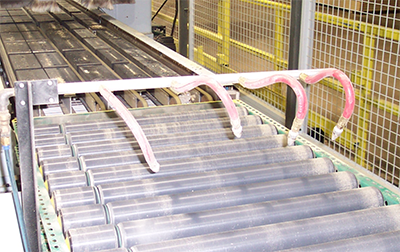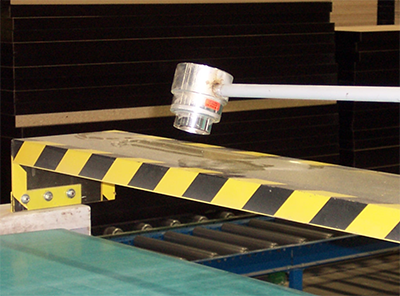
Blowing with compressed air is costly, due to the poor conversion efficiency between electrical energy and compressed air power. Typically for any mechanical operation, it costs about 10 times more to use compressed air to move something — even more if that something is only minute particle, such as dust and wood chips.
It is very common to see homemade blowers installed on industrial production conveyor lines to clean debris off finished products. Often times, these devices are simply pipes with drilled holes, located above the conveyor. Sometimes engineered nozzles are applied to reduce the flow and cost of the operation as shown in Figure 1.
Often, the blowing is installed on conveyors with the product only being transported a few times per minute, with actual blowing time required only for a few seconds per minute. Yet many blowing assemblies have been installed with continuous blowing. The blowing assembly in Figure 1 consumes 28 cfm, which costs about $5,000 per year in compressed air costs

Now available are quite an assortment of electronic devices like sensing eyes, which can be installed on the blower feed to sense when an object is under it and turn on the blower with a solenoid valve. A controlled blower might remain off 97% of the time, saving as an example 97% of the $5,000 per year cost of continuous blowing. An even better situation is if this blower can be replaced by a low-pressure source of air, perhaps an electric blower.
Reductions of compressed air costs can often be achieved by intelligent control of blowing loads.

Leave a Reply